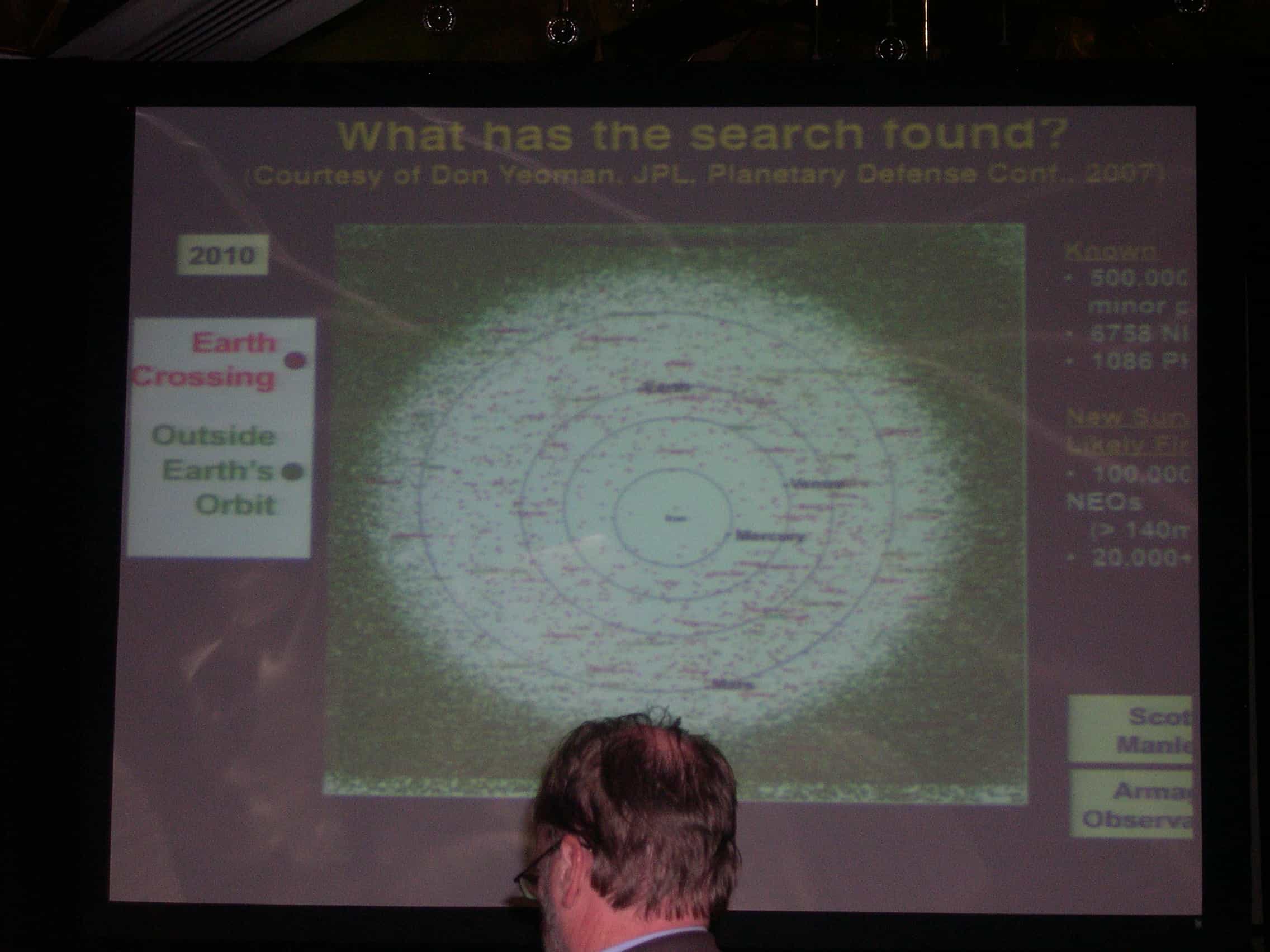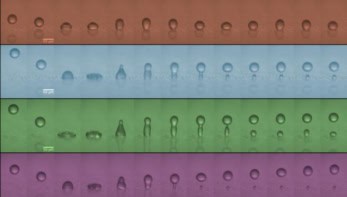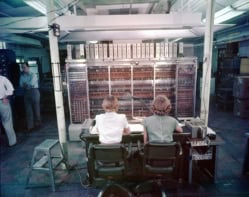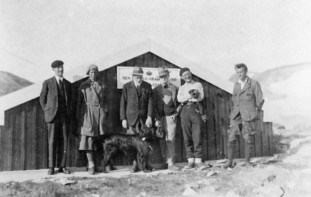
Impact zone That’s a lot of dots
By Michael Banks in Miami, Florida
We all know the plot for the film Armageddon starring Bruce Willis. An asteroid the size of Texas is on a collision course with Earth, and the US government sends a bunch of astronauts to plant a nuclear device underneath the asteroid to blow it to pieces, thus saving humanity.
Well that is how it goes in Hollywood. But what would we do if we suddenly found a large asteroid that would hit the Earth within the next 50 years?
Last night David Dearborn, a physicist at Lawrence Livermore National Laboratory in California, gave a talk here at the 216th American Astronomical Society meeting in Miami, Florida, about the best technologies to avoid an asteroid extinction event.
In 1998 NASA started a project named Spaceguard with the aim of cataloguing 90% of all asteroids in the solar system larger than a kilometre before 1998. Currently the project has detected around 80%, mainly because, rather unsettlingly, astronomers are finding more and more of them.
Then, in 2005, Congress asked astronomers to catalogue 90% of asteroids greater than 140 m by 2020 using a number of telescopes including the Large Synoptic Survey Telescope, which is currently being built in Chile and is expected to come online in 2015.
If an asteroid is on a collision course, Dearborn says that it is important to know its composition, whether it is made up of rubble, has a solid core, or even if it is a collection of solid rocks held together by rubble.
One point Dearborn reiterated is to deflect an asteroid only when we are 100% confident that it will hit the Earth. “You have to leave it alone until you know if it is going to be a problem,” says Dearborn.
So how do you blow up an asteroid or at the very least deflect it out of harms way? One option is painting the asteroid white, which would change its albedo and slowly start to change its orbit. Given that Dearborn says it would take decades to carry out this paintball exercise on a celestial scale it is perhaps not the best option.
Another is firing a high-powered laser pulse at the asteroid, but this again would take around 6000 years to change its speed by around 1 metre per second. “The National Ignition Facility is not really designed for shooting asteroids,” says Dearborn.
So the best technique for deflecting them is via a nuclear explosion. Two options are to activate a nuclear device just before impact or attempting to strike the object with a nuclear weapon. Dearborn presented a variety of models showing how an impact would break up an asteroid depending on its composition. “Current nuclear technology could handle most possible threats,” concludes Dearborn.
I guess Bruce Willis had it right all along.



